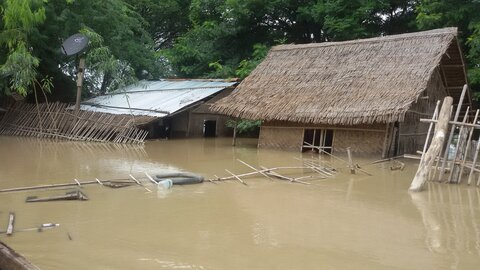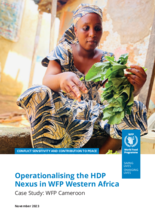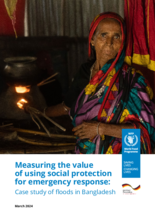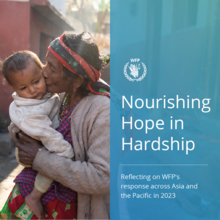
In October 2015, the Food Security Sector co-led by the Food and Agriculture Organization and the World Food Programme released an Agriculture and Livelihood Flood Impact Assessment Report. The assessment was jointly led by the Ministry of Agriculture and Irrigation, Ministry of Livestock, Fisheries & Rural Development, FAO and WFP under the framework of the Food Security Sector with the partnership of CARE, CESVI,JICA, LIFT, UN women and World Vision.
Key findings are
-
79 percent of the total cultivated area destroyed by the floods consisted of monsoon paddy rice, resulting in an overall loss of production. Although replanting was conducted in some regions/states, regular agricultural practices such as land preparation and the use of good cropping techniques, including transplanting, could not be followed. This will likely result in a much lower yield in replanted areas in the upcoming harvest season.
-
More than 250 000 livestock including poultry, cows, buffalo and pigs have been lost among the six regions/states assessed. Rakhine and Sagaing are the most affected State / Region. Loss of poultry especially affected women as they are the one in charge of these animals.
- Additional findings of the assessment show that affected populations have begun to engage in distress coping mechanisms such as borrowing money and selling productive assets in order to access food. Levels of debt are escalating and affected populations will need to access cash as soon as possible in order to repay their debts.
- Although markets are performing as usual, prices of food commodities and agricultural inputs have generally increased due to rising transportation costs. On the other hand, demand for food commodities has generally decreased due to food assitance received in most of the affected regions/states.
The assessment results reinforce the need to rapidly respond to this emergency sitatuion. The support of the donor community is key to help provide relief and support recovery to build back better and strengthen the resilience of the affected populations.
| Document | File |
|---|---|
| Final_Impact_Assessment_Report_final.pdf |
PDF | 2.28 MB
Download
|



